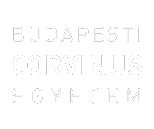Tóth, Máté (2020) THE NEW AGE OF MARKET RESEARCH: An Investigation on whether non-automatized Methods will vanish in the 21st Century. BA/BSc szakdolgozat, BCE, International Study Programs. Szabadon elérhető változat / Unrestricted version: http://publikaciok.lib.uni-corvinus.hu/publikus/szd/Toth_Mate.pdf
|
PDF
- Requires a PDF viewer such as GSview, Xpdf or Adobe Acrobat Reader
709kB |
Szabadon elérhető változat: http://publikaciok.lib.uni-corvinus.hu/publikus/szd/Toth_Mate.pdf
Absztrakt (kivonat)
Aim: In this thesis, I will demonstrate why automatized methods of measuring consumer satisfaction and keeping track of the consumer voice is the best and most efficient way to build and monitor the relationship between consumers and businesses, especially for an online service company. My argument in this thesis is that data mining, social listening and the instant online measures of satisfaction are more effective and efficient than direct question-based methods of measuring consumer satisfaction for a company that is based in an online setting. I believe efficiency comes from its advantages in speed as well as cost, since it can process comments far quicker, than a human analyst could, while also being able to run without human assistance during the process, therefore allowing the much needed human capital to focus on other areas of business. Structure: Naturally, the thesis starts of with an Introduction, in which I specify the research question, the larger topic, and my motivation behind my choice of thesis topic. Then, I follow up with the theoretical background, where I introduce different elements of my research, such as the technologies and methodologies in question, costumer satisfaction itself, its measurements and the industry I chose to focus on, which is Telecommunications. During the Methodology chapter, I explain the differences between qualitative and quantitative research, then elaborate on my chosen methodology. I describe why it fits the research better and introduce my interviewees to the reader. Then, in the analysis chapter I review the content of my interviews, compare the findings and give an explanation on the opinions of my expert interviewees. Finally, I conclude my findings and answer the research question in the Conclusion part of my thesis. Methodology: In the methodology part, I explain the research methodologies used in my thesis, and explain my reasons of choosing them. After a quick qualitative comparison, where I explain that in software can understand and interpret human sentiment on par with human annotators, and state that whether the technology will be used instead of direct question based, and more manual methods is not best answered by qualitative comparisons. Taking various methods of qualitative research into consideration, I decided that in-depth interviews suit my topic best, as they provide significantly more detailed information than what would be available through other data collection methods, such as surveys. In-depth interviews are useful when you want detailed information about a person’s thoughts and behaviours or want to explore new issues in depth. Interviews are often used to provide context to other data (such as outcome data), offering a more complete picture of what is going on and why. Since I believe that the technology is relatively new, and not many research papers have been done on the topic before, I believe that this method suited my thesis the best. I had the opportunity to talk to three different experts, and explore the question from the point of view of a more “traditional” market research expert, an expert working for a company that offers automated costumer satisfaction methods, and an unbiased expert who works for a large telecommunications firm. Result: During my research and analysis on the hypothesis that digitally automatized methods of customer satisfaction measurements, I have found that most expert opinions on the topic align. According to my research, experts agree that right know and for the foreseeable future, these technologies will not be able to fully substitute direct question based methodologies. Due to the amount and sometimes untraceable nature of the data they use as well as the difficulty to get reviews that fit specific questions and identify target groups behind those comments that we find, I believe that my hypothesis of the automatized customer satisfaction measurements being able to fully substitute direct question based methods can be confidently rejected. Not just as of today, but for the foreseeable future as well.
| Tétel típus: | BA/BSc szakdolgozat |
|---|---|
| Témakör: | Információgazdaság Marketing |
| Azonosító kód: | 13996 |
| Képzés/szak: | Economist in International Business |
| Elhelyezés dátuma: | 06 Okt 2021 12:28 |
| Utolsó változtatás: | 02 Dec 2021 11:52 |
Csak a repozitórium munkatársainak: tétel módosító lap

